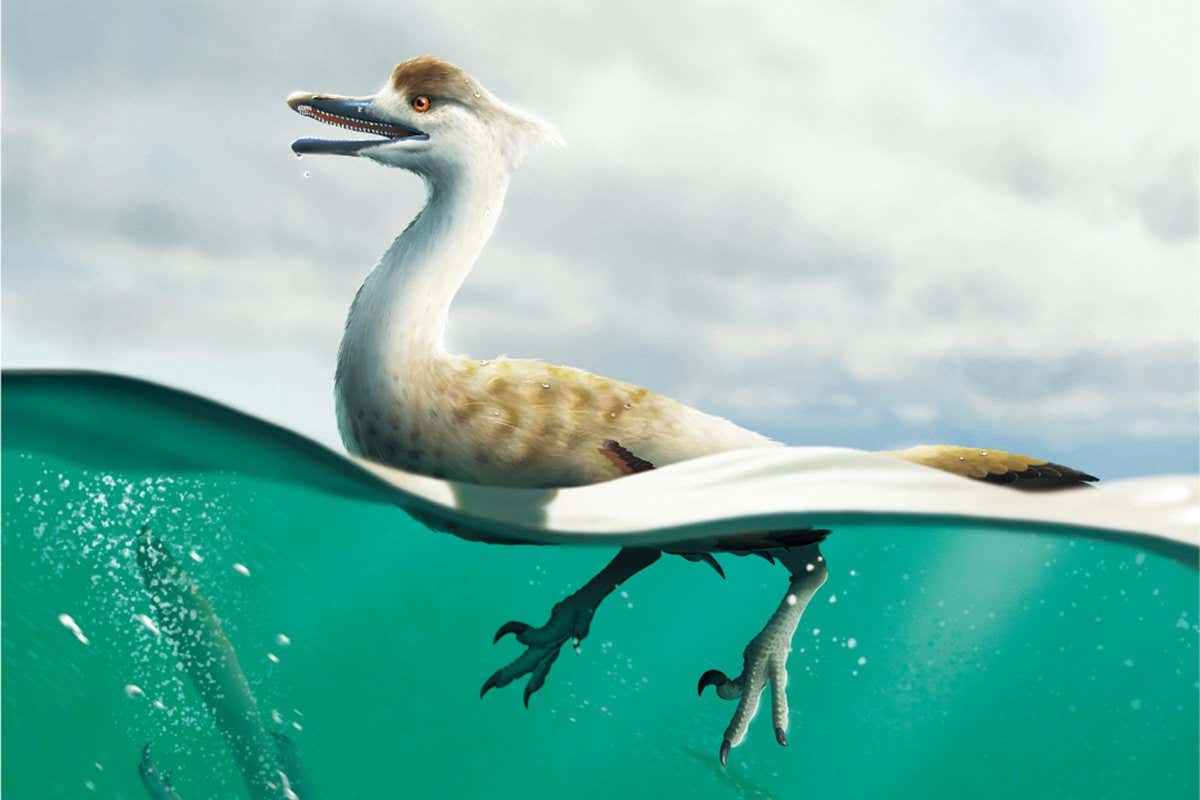An analysis of a fossil has revealed a new species of dinosaur named Natovenator polydontus. It was semi-aquatic, looked a bit like a duck and ate meat
Life 1 December 2022
An artist’s impression of Natovenator polydontus
Yusik Choi
A new species of dinosaur is the first found to have a streamlined body like diving birds but not belong to the feathered class of dinosaurs that modern-day birds evolved from. This suggests that streamlined bodies evolved independently in different lineages of theropods, a group of hollow-boned dinosaurs that walked on two legs and mainly ate meat, including Tyrannosaurus and Velociraptor.
“It is the first case among non-avian dinosaurs showing a streamlined ribcage like those seen in many modern semi-aquatic animals adapted to swimming,” says Andrea Cau at the University of Bologna in Italy, who was not involved in the work.
Yuong-Nam Lee at Seoul National University in South Korea and his colleagues examined a mystery fossil unearthed in Mongolia’s Gobi desert in 2008 that included a nearly complete skeleton: a skull, spinal column, one forelimb and two hindlimbs. They noticed the animal had a sleek body and goose-like neck, something never seen before in a non-avian theropod.
Advertisement
Furthermore, “the rib orientation and shape clearly indicate that this animal had a streamlined body, as penguins do”, Lee says. Together, this suggests the new dinosaur was a skilled swimmer and diver.
The skull also had many needle-like teeth, leading researchers to name the species Natovenator polydontus, or “swimming hunter with many teeth”. They estimate that the species lived during the Late Cretaceous Period between 100 million and 66 million years ago and posit that it ate fish and insects.
The researchers also found that N. polydontus is genetically closely related to Halszkaraptor, a genus of small non-avian dinosaurs with only one known species. Since the Halszkaraptor discovery in 2017, scientists have debated whether it was semi-aquatic. Now, the similarities between the N. polydontus and the Halszkaraptor provide further evidence that the Halszkaraptor was indeed adapted for life on the water.
“It is a welcome discovery which contributes to solving the controversial lifestyle of the halszkaraptorine dinosaurs,” says Cau.
Journal reference: Communications Biology, DOI: 10.1038/s42003-022-04119-9
More on these topics:
































